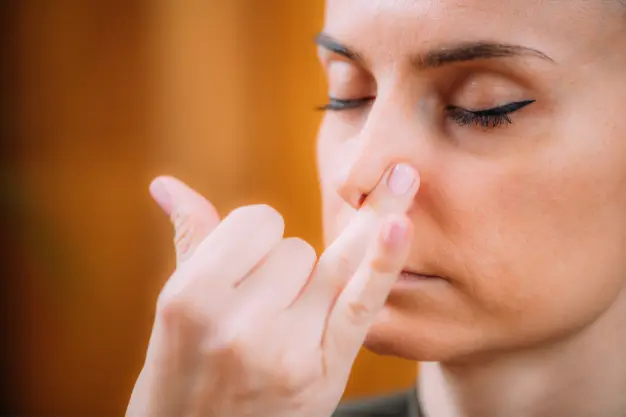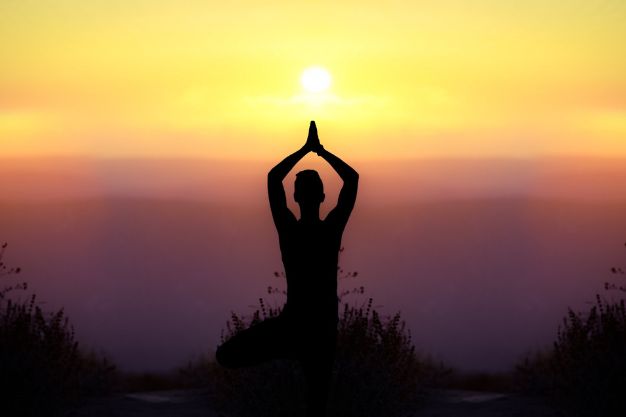SLEEP WELL – YOGA FOR INSOMNIA
Do you find difficulty in sleeping, keeping you restless night after night?
Insomnia, a sleep disturbance, serves as both a sign and symptom, plagues those with sleep disorders, making it tough to fall asleep. While insomnia can affect people of all ages, it’s notably prevalent among the elderly. This sleep woe can be short-term, lasting up to three weeks, or long-term, extending beyond 3–4 weeks. Prolonged insomnia may result in memory issues, depression, irritability, and an elevated risk of heart disease and accidents. In my experience, among my new students, insomnia often stems from racing thoughts linked to mental stress.
This persistent restlessness might also be connected to conditions like sleep apnea, a nighttime breathing disorder complicating matter further. It is often marked by loud snoring and moments when breathing stops. These pauses deprive sufferers of vital oxygen during slumber.
Choking, which is also a symptom, may result from physical factors like obesity or facial deformities elevating the risk of airway obstruction.
Let’s explore the yogic approach to addressing this issue, as it offers time-tested solutions. In yoga, the dominance of nostrils influences mood, energy, and overall well-being. Each breath carries a meaningful message to our brains, shaping responses in both our senses and vital organs, enhancing holistic health.
Breathing, usually automatic, becomes a controllable force in Swara yoga. Often, one nostril breathes freely while the other temporarily closes, influenced by our physical or mental activities.
In moments of physical relaxation, the left nostril takes charge, fostering mental activities like meditation and prayer. Conversely, the right nostril becomes active during physical actions, like eating, playing, and even during sleep.
Why does the right nostril dominate during sleep?
Before bedtime, our minds may hold onto daily stress, disrupting the usual sleep rhythm. When the right nostril dominates without physical activity, it can lead to instant slumber.
Struggling to sleep due to stress or a busy mind?
Here’s a suggestion: Inhale through the right nostril for 5 seconds, then exhale through the left for 10 seconds. Do this for at least 5 minutes until the right nostril prevails, promoting better sleep.
Once your right nostril is dominant, engage in alternate nostril breathing 5 to 10 times, maintaining an equal inhale-exhale ratio.
Adjust the ratio based on your lung capacity, aiming for 1:1 or 1:2, where exhales are equal to or twice the length of inhales.
Consider slowing your breath rate to 4-6 breaths per minute for enhanced relaxation and mental calmness, promoting a peaceful night’s sleep.
To practice Bhramari, gently close your eyes and ears using your thumb and other fingers. Inhale deeply for 5 seconds, then while exhaling, create a humming sound. Repeat Bhramari 11 times, but skip ear closure if you have vertigo or ear issues to ensure your comfort and safety.
In the pursuit of a restful and rejuvenating sleep, the ancient wisdom of yoga offers valuable insights and techniques. At Vyaniti Yoga, we’re dedicated to helping you overcome the challenges of insomnia and sleep disturbances through these time-tested practices. Our comprehensive approach, including Swara yoga and Bhramari, empowers you to take control of your sleep patterns and achieve a tranquil night’s rest.
If you’re yearning for peaceful slumber and improved well-being, we invite you to connect with us. Visit our website at https://vyanitiyoga.com/ to explore our offerings and gain access to resources that can transform your sleep quality. You can also reach out to us directly via phone at +968 96526103 or email us at yogatherapy4all@gmail.com.
Don’t let sleepless nights define your days. Embrace the harmony of yoga and embark on a journey towards better sleep and a brighter tomorrow with Vyaniti Yoga. Your path to restorative rest begins here.









